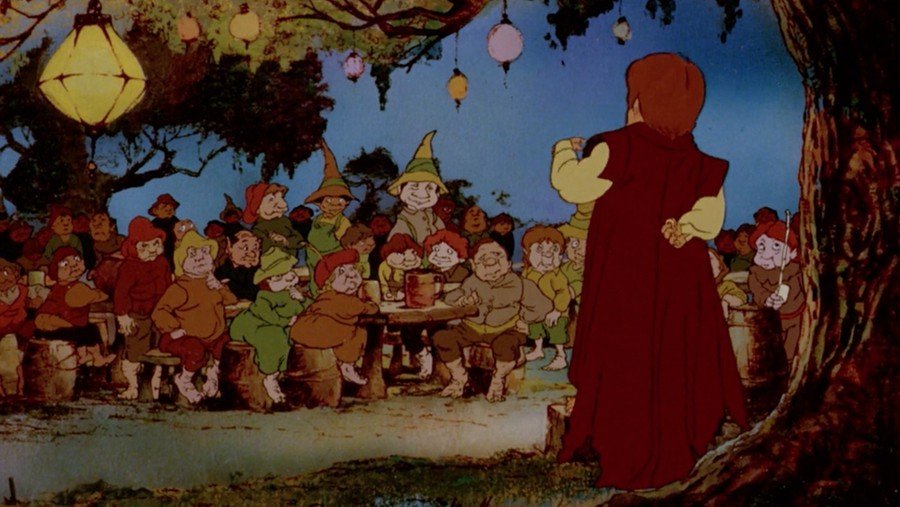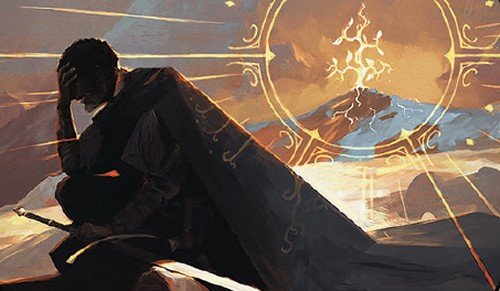On the Monday, May 29th, Wizads released the new banned and restricted update for the Standard format, with the following cards becoming illegal:

In today's article, we'll discuss the impact this update will have on Standard, and which decks are the winners and losers in the current Metagame.
New bans: expectations and reality
In my latest article, I discussed which cards could be banned. In it, we speculated that Monday's announcement would serve as a general maintenance to the format, with the possibility of banning pieces from different archetypes to balance the competitive environment, and prepare the ground for Wilds of Eldraine.
Wizards, however, has bet on another proposal: removing Standard's biggest problems today, and letting the Metagame adapt to these changes, with the possibility of performing another update on August 7th.
No player should be surprised that Fable of the Mirror-Breaker, Reckoner Bankbuster and Invoke Despair have left Standard. After all, the Rakdos shell, with splashes of blue in the Grixis versions, had a solid enough mana base to cast spells costing 
Fable of the Mirror-Breaker was also essential to most other Midrange/Ramp strategies: It allowed you to speed up and fix mana with the Treasures, discard Atraxa, Grand Unifier and Etali, Primal Conqueror to reanimate with The Cruelty of Gix or Invoke Justice, as well as abusing numerous ETB effects with its transformed side.
Reckoner Bankbuster was a victim of its own success and how the Metagame developed this season. When every game is a midrange mirror, the number of cards in your hand is one of the most important resources you have, and this artifact was a great early-game means to keep your hand full, while providing an late-game threat.
Invoke Despair was one of the most unfun cards to play against in the format. Not only did it create an absurd resource disparity for its controller, it also guaranteed good maindeck answers against Planeswalkers and Enchantments, as well as punishing your opponent for not using those permanents.
The nail in the coffin for Invoke Despair was Chandra, Hope's Beacon, which created a powerful "combo" with this spell, transforming it into an improved version of Cruel Ultimatum or Archon of Cruelty.
In a general context, this Monday's bans were as expected, without major surprises and even milder than many speculated last week.
Cards like Sheoldred, the Apocalypse and Atraxa, Grand Unifier remaining in the Metagame is not a surprise, as they are parts from more recent releases, and in the case of Black-Based Midranges, they served as payoffs for what the archetype already set out to do.
Without Fable, these strategies become less consistent, and these cards are vaguely less threatening in this particular deck, but will still feature many wins in other archetypes in the coming months.
The Standard Bans' Losers
Rakdos / Grixis Midrange
The main target of this announcement were the 
The core of all these variants suffers with the absence of Fable of the Mirror-Breaker to speed up mana, and the most famous versions - Rakdos and Grixis Midrange - lose even more without Invoke Despair as a late-game bomb, capable of turning the game around on its own.

With these bans, several holes opened up in Rakdos lists today, and although the removals + Bloodtithe Harvester + Sheoldred, the Apocalypse core is strong on its own, there is now a huge vacuum in their slots, which must be filled with other cards that don't offer the same immediate value, like Graveyard Trespasser and perhaps Liliana of the Veil if the Metagame doesn't turn into a go-wide strategy fest.

Grixis variants, despite losing some of their consistency, seem more prepared than Rakdos to survive the bans, due to the range of decent threats in the first turns, such as Chrome-Host Seedshark, Corpse Appraiser, and even The Modern Age to filter your hand and place bombs in the Graveyard, to feed The Cruelty of Gix.
I don't think this will be the end of Rakdos/Grixis Midrange in Standard, but without three of its main key cards, the archetype will be a step behind several other competitive strategies, and will lose a large portion of its representation in the format.
Mono White Midrange
Several people on social media consider Mono White Midrange to be one of the biggest winners of this banned and restricted announcement, as its key cards remain in the format, while losing one of its top predators, Invoke Despair.

For me, Mono White is one of the losers due to the essential role that Reckoner Bankbuster plays in the deck as its main source of card advantage, and its notorious interaction with The Restoration of Eiganjo and Serra Paragon, leaving Wedding Announcement as the only means of recurring draws for the archetype, without any viable substitute to guarantee its strength in attrition games.

Mono White (and the Orzhov or Azorius variants) will still be a great option if the Metagame takes a more aggressive stance, as it can adapt with more sweepers and Sunset Revelry to gain virtual extra turns. However, without its main draw engine, the archetype becomes worse on Midrange mirrors, not to mention the possible growth of Ramp strategies to worsen its performance in the competitive scene.
Reanimator
One advantage of Standard's Reanimator strategies was that you didn't need to use bad cards to make your deck good. Fable of the Mirror-Breaker and Bloodtithe Harvester were already the perfect enablers for you to discard the pieces you wanted to reanimate before casting The Cruelty of Gix or Breach the Multiverse.
While Harvester remains in format, the departure of Fable of the Mirror-Breaker removes the quality of looting effects that Reanimator archetypes have access to. Cathartic Pyre is one of the best replacements today, and doesn't come close to the value that the red enchantment provided.

Grixis variants still have some pieces that at least interact with their board position and generate other qualities during the game, such as The Modern Age and Kaito Shizuki, to try to "replace" this slot, in addition to having Invasion of Amonkhet to add to their consistency of putting threats in their graveyard, and can indicate the future of this archetype moving forward.
However, Fable's absence also affects the three-drop slot of other Black-Based archetypes, and one of the main candidates to occupy this space is the increase on maindeck Graveyard Trespasser if Reanimator lists remain on top, making the Metagame more hostile to this strategy.
The Standard Bans' Winners
Esper Legends / Esper Midrange
Esper Midrange was last season's top pick in Standard, and it is highly speculated that, with the Rakdos' core banned, it would make turn into the Metagame's next dominant force. As Dominaria United's season developed, this strategy morphed into the deck we know today as Esper Legends.
Today, Esper Legends takes advantage of an excellent creature suite to establish a disruptive/aggressive plan, which takes full advantage of Raffine, Scheming Seer, its interaction with Sheoldred, the Apocalypse, without being dependent on neither to secure its victory.
Therefore, its consistency and its game plan that allows it to establish its clock while delaying the opponent's make this archetype one of the main candidates for the best deck in the format. However, the Metagame will change, and cards like Dennick, Pious Apprentice and Thalia, Guardian of Thraben can lose space and guarantee slots for other efficient spells, if we have an aggressive format, or if it strays too far from Reanimator decks.

In fact, Esper's base could make room for a more midrange-oriented variant as we knew it before Dominaria United, with room for more removals, as well as other powerful permanents, like Wedding Announcement, not to mention the possibility of an Esper Reanimator with Raffine, Scheming Seer and Invasion of Amonkhet to reanimate Atraxa, Grand Unifier.
That is, the "multi-archetypes" space that the 

Goodstuff Ramp
Four-Color/Five-Color Ramp archetypes are other candidates for best decks in the format, as they have become the best strategy for casting late-game bombs such as Atraxa, Grand Unifier, Breach the Multiverse and Etali, Primal Conqueror, in addition to the inherent bombs of your strategy, such as Herd Migration.
Historically, Big Mana decks have struggled in Control matchups, where the opponent benefits from going into the late-game, and can respond to six or seven mana spells with any counterspell.
The problem is that Control decks are very low this season, and have not yet shown any signs that they can return to the Metagame even after the bans, as the payoffs to playing Midrange or Ramp are still better, in addition to Thalia, Guardian of Thraben and Sheoldred, the Apocalypse being very punishing cards for these archetypes.

Furthermore, Tyrranax Rex is still a huge problem for any Control, even if it runs cheap removals like Go for the Throat, and the creature's immediate impact on a strategy that manages to cast it very early is significant with multiple copies on the Sideboard.
Selesnya Enchantments
Enchantment archetypes have disappeared from competitive Standard since the rotation, and the main reason was that the Metagame was too prepared to deal with Fable of the Mirror-Breaker, in addition to the "maindeck hate" that Invoke Despair gave Black-Based against enchantments.
Without its main restrictions and with the rotation postponed for a year, this strategy has the potential to return to the Metagame with a proactive proposal, which extracts value from the interaction between its permanents.

Selesnya Enchantments decks can now also choose to follow different and/or very interactive lines. For example, Calix, Guided by Fate has motivated some players to try a "pseudo-Bogles" version, with Generous Visitor, Katilda, Dawnhart Martyr and Audacity, while other variants rely on removals like Ossification, alongside powerful threats to get the most out of Hallowed Haunting.
With the Metagame no longer set up against it as collateral damage, this is one of Standard's most promising aggressive archetypes in the coming week!
Conclusion
That's all for today.
Other archetypes may get more attention in the coming weeks as Standard adjusts to bans. For example, Azorius Soldiers and Mono Red Aggro will have more space in these first few weeks, but its success will depend on how the rest of the format develops, and how the new "best decks" give it space to participate in the triad of rock-paper-scissors that constitute a healthy Metagame.
Control still looks like it will have problems with appearing at the top of the competitive scene, as there are not enough payoffs for this strategy to make it worth playing with it instead of trying to ramp to cast Atraxa, Grand Unifier, or betting on a more proactive game plan against Ramp, like Esper.
If you have any questions, suggestions, or would like to elaborate on a deck that wasn't mentioned here, feel free to leave a comment!
Thanks for reading!
















— 评论 0
, 反应 1
成为第一个发表评论的人